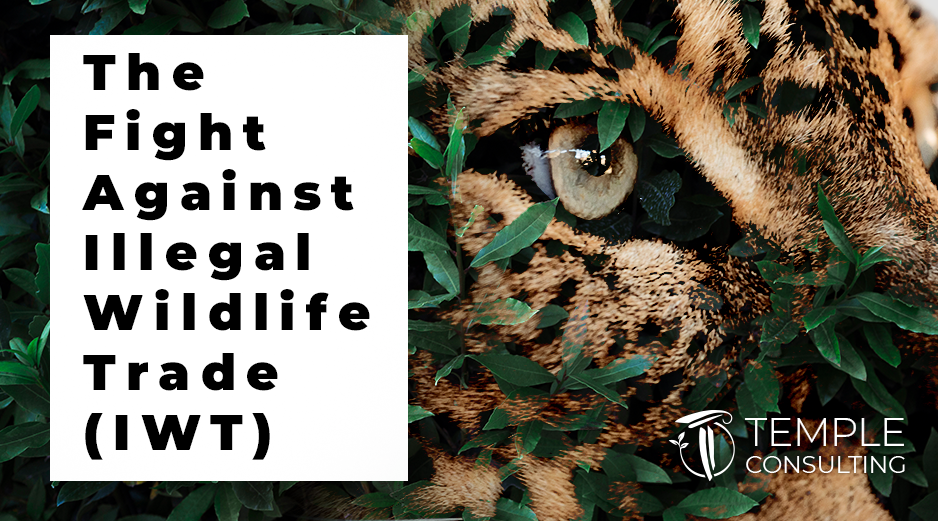In the third and last part of this series, we explore the report of the Financial Action Task Force (FATF) entitled Money Laundering and the Illegal Wildlife Trade published in June 2020.
As mentioned previously, wildlife trafficking, a soaring and lucrative industry is a major transnational organized crime. Concerned about the lack of interest about the financial aspect of this crime, FATF came forward with this Report to help the global financial system combat the money laundering offences related to this crime. While there is significant effort to track down and seize the illegal wildlife and products, jurisdictions are not very proactive in following the money and uncovering the trails of the criminals behind.
Recognizing The Avenues Exploited By Criminals
Jurisdictions that are rich in biodiversity and has weaker law enforcement tend to be more prone to illegal wildlife trade. Laundering of proceeds is not attributed to the source country but also permeates to the transit and destination countries alike. Criminals syndicate would send payments to cover transport and shipping costs, and can set up complex corporate structures to move funds and shipping across countries. Often, import and export businesses are used as a front to hide and move proceeds of crimes. Industries concerned would be farms, taxidermists, pet shops, zoos, traditional medicine, jewelry and fashion.
The criminals may also not be actively involved in the sourcing of the wildlife. Hence, they employ locals to act as strawmen and blend in the community; creating an air of legality. Cash payments are the most preferred method in the trade. This, however, does not preclude the increase in online marketplaces whereby the parties to the crime exchange payment via mobile payment methods and social media. E-banking platforms tied to credit cards and bank accounts are examples where the formal financial sector is exploited. In 2016, for instance, The Kenyan Revenue Authority reportedly traced a criminal network involved in a shipment of ivory from Mombasa to Bangkok through analyzing M-Pesa mobile phone bank transfer records. Non-traditional methods include the use of money mules to circumvent reporting thresholds. The level sophistication of wildlife trafficking is being compared to that of drug trade. South African and Indonesian authorities have each pointed to cases where crime syndicates are laundering proceeds through the purchase of luxury property and vehicles in cash.
Case Study: Indonesia- Exploiting The Trade Network
In 2018, a pangolin smuggling case points towards the mastermind of a criminal network. The individual is the owner of a frozen fish company. Intermediary bank accounts were set up under false names to disguise side payments and given the façade of legitimate animal suppliers. Funds were being received from convicted drug dealers. The account of the company was used to comingle the funds from the fishing trade to illegal pangolin trafficking. Incoming and outgoing payments did not match the information on the trade documents and this set the authorities to dig into the situation.
Countries may therefore consider assessing the money laundering risks emanating from IWT as part of their national risk assessment or through a specific study. For example, in 2017, Namibia’s Financial Intelligence Unit (FIU) carried out a targeted study on the illicit finance risks arising from domestic rhino and elephant poaching.
Equipping the country to combat money laundering arising from IWT
UN General Assembly has adopted several resolutions to combat IWT, and in September 2019, reiterated its call for all members “to amend national legislation, as necessary and appropriate, so that offences connected to IWT are treated as predicate offences for money laundering”. Given the sophistication demonstrated by the criminals; they are able to adapt quickly and find alternatives to launder the proceeds arising from IWT. In this respect, jurisdictions are recommended to treat environment crimes, smuggling, fraud and tax evasion as predicate offences for money laundering.
The need to allocate adequate resources and attention to aid in the fight against money laundering arising from IWT is real. Personnel of law enforcement and investigative authorities should be trained to have specialized knowledge and develop skills to detect red flags and launch an investigation. The Organisation for Economic Co-operation and Development (OECD)’s Task Force on Countering Illicit Trade and the Egmont Centre of FIU Excellence and Leadership (ECOFEL) provide reports and guidance to aid in financial investigations in relation to IWT.
Countries are also required to establish nationwide cooperation between anti-money laundering investigatory authorities and anti-wildlife trafficking organizations to gather expertise and share skills and information. For example, in the United States, Presidential Task Force on Wildlife Trafficking brings together the U.S. Fish & Wildlife Service, Department of Justice, U.S. Agency for International Development, Department of Agriculture Animal and Plant Health Inspection Service, and Department of State to coordinate effort in IWT. Countries are encouraged to establish multiagency co-ordination mechanisms that allow for the sharing of intelligence and information between the FIU, financial investigators and agencies involved in investigating wildlife crimes and prosecutorial authorities.
There is also the need to collect and disseminate financial information on money laundering techniques, scenarios and red flags. This will not only support financial investigation but will also help in filing suspicious transaction reports related to IWT.
End Note
IWT is a transnational issue which does not only affect the country where the wildlife is being sourced. As discussed in this series dedicated to wildlife trafficking, IWT involve large amounts of money transiting across borders. The proceeds from IWT represent a global threat. The FATF therefore calls out to jurisdictions to pay more attention to IWT as a threat, to carry out risk assessments and to share the findings with the relevant authorities that investigate the financial crimes related to IWT.
Sources:
https://allafrica.com/stories/201909250322.html
https://www.wwf.org.uk/sites/default/files/2019-08/WWF_IWT_Report_v8.pdf
https://br.usembassy.gov/u-s-task-force-wildlife-trafficking-efforts-combat-wildlife-trafficking/


Recent Comments